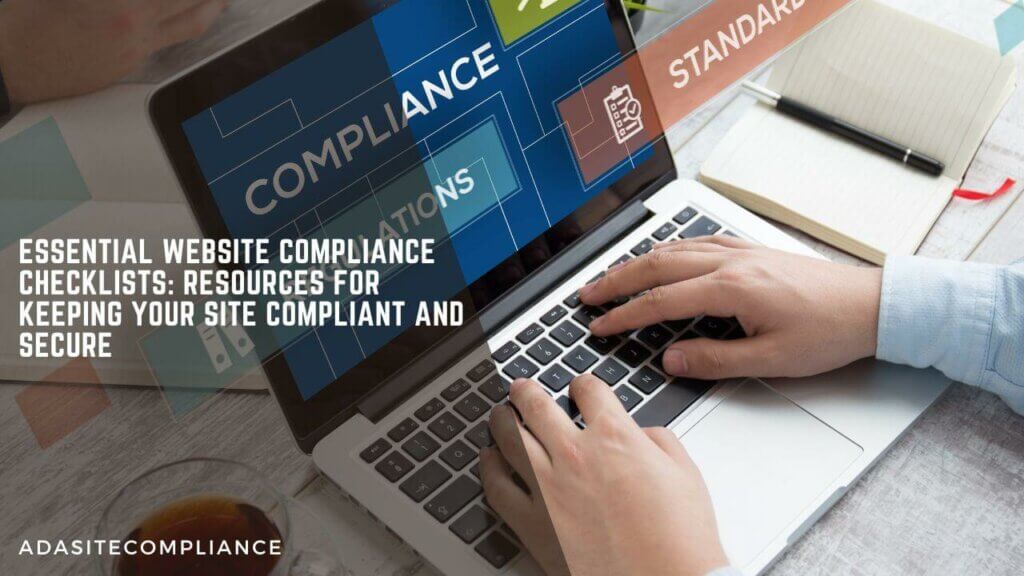
The EU Web Accessibility Directive and the European Accessibility Act: Two Essential Digital Age Guides
Share via:
In the modern online landscape, the imperative for web accessibility has become a key factor in shaping inclusive online experiences. Acknowledging this critical need, the European Union plays a pivotal role in digital inclusion by enacting two significant legislative frameworks.
They are the European Accessibility Act and the EU Web Accessibility Directive.
These directives go beyond mere legal compliance; they represent a pivotal shift toward crafting a digital world. A shift that is universally accessible and inclusive, embracing the diversity of all users, including those with disabilities.
What constitutes the EU Web Accessibility Directive and the European Accessibility Act?
The European Accessibility Act and the EU Web Accessibility Directive are monumental in their scope and impact. They symbolize the EU’s commitment to breaking down digital barriers and creating an online environment where accessibility is not an afterthought but a fundamental aspect of design and development.
These laws underscore the importance of digital platforms and tools being readily navigable and usable for everyone. They thus foster an inclusive digital society where no individual falls back due to technological constraints.
This commitment by the European Union to enhance web accessibility is a response to a growing dependence on digital mediums in our daily lives and a reflection of broader societal recognition.
It acknowledges that individuals with disabilities can also access all information, services, and opportunities. This progression towards digital inclusivity is a moral and ethical imperative that opens up new avenues for innovation and broader market reach in the digital landscape.
The EU Web Accessibility Directive

The European Union’s commitment to digital accessibility has been a progressive journey since the early 2000s. It has steadily evolved through various initiatives like the European Disability Strategy in 2010 and the Mandate 376 Accessible ICT Procurement Toolkit.
This journey underscores the EU’s position as a global pioneer in championing innovative and effective strategies to ensure equal online access for all users, irrespective of their abilities.
The development and implementation of these initiatives reflect a deep understanding of the diverse needs of internet users and a commitment to creating a digital environment that is inclusive and accessible to everyone.
The landmark enactment of the Web Accessibility Directive in 2016 marked a significant milestone in the EU’s accessibility efforts. The directive is a fifteen-page document that mandates all public sector websites and applications within EU member states to adhere to a comprehensive and standardized set of accessibility criteria.
This move aimed to create a uniform digital landscape where accessibility is not a privilege but a standard practice. The directive’s requirements emphasize the importance of building inclusive digital platforms, ensuring that people with disabilities have the same level of access to information and services as others.
Non-compliance with this directive carries legal repercussions like fines and penalties. It also risks negative public perception and backlash for maintaining an exclusive online presence.
The European Accessibility Act
In tandem with these developments, the European Accessibility Act emerged as a significant stride forward in digital accessibility, extending its influence to the private sector.
Officially adopted by the EU in 2019, this directive aims to standardize accessibility criteria for essential products and services. The Act’s broader objective is to enhance the availability and affordability of accessible products and services, ensuring they are within reach of those who need them most.
What’s the difference between the two?
What sets the European Accessibility Act apart from the EU Web Accessibility Directive is its expanded scope.
It extends beyond web and mobile applications to include various digital products and services, such as terminals, ATMs, and transportation sector elements like ticketing machines.
This expansion acknowledges the evolving nature of digital interaction and the need to make a wide array of digital touchpoints accessible.
The European Accessibility Act represents a crucial step in ensuring accessibility is vital in the private sector, aligning with the EU’s ongoing efforts to create a barrier-free digital environment.
By standardizing accessibility criteria across essential consumer products and services, the Act aims to foster an inclusive digital market—a market with accessibility embedded in the fabric of product and service design.
This approach not only benefits individuals with disabilities but also contributes to a more inclusive and equitable society. In this society, digital products and services cater to the needs of a diverse population.
Through the European Accessibility Act, the idea of inclusivity includes the corporate sector.
Taking advantage of the momentum acquired, the European Accessibility Act is on the verge of triggering a revolution in accessibility within the corporate sector. It’s not enough for businesses to just comply with this act.
It is also an opportunity for them to demonstrate their dedication to the concept of corporate social responsibility and to get access to a bigger market.
By complying with these standards, businesses first avoid encountering legal issues. In addition, they also contribute to the development of a society that is more accepting of people from various backgrounds.
Who Falls Under the Scope of the EU’s Web Accessibility and Accessibility Acts?

Responsibility for adhering to accessibility standards deviates from these directives. The Web Accessibility Directive primarily targets public sector organizations.
This includes state and local government bodies, public law organizations, and associations. However, the directive’s influence notably extends into the private sector.
Private companies that supply products or services to government-operated websites must ensure that their offerings meet these accessibility standards.
This compliance can be achieved by aligning their products and services with established accessibility guidelines, ensuring seamless integration with the public sector’s digital environments.
On the other hand, the European Accessibility Act casts a broader net.
It significantly impacts manufacturers and service providers in the private sector, particularly those dealing with vital electronic products and services. This Act represents a more expansive approach to accessibility, extending its reach beyond the traditional boundaries set by earlier legislation.
Micro-enterprises can be exempt from these standards. However, most companies will be obligated to conform to these new requirements once they come into effect.
This dual-layered approach to compliance underscores a comprehensive strategy by the EU to enhance digital inclusivity. By targeting both public and private sectors, the directives ensure that a broad spectrum of digital services and products becomes accessible. It thereby promotes an inclusive digital ecosystem that caters to the needs of all users, regardless of their abilities.
Timelines for Implementing Accessibility Regulations and Meeting Compliance
Currently, the EU Web Accessibility Directive is nearing the completion of its compliance phase. As of September 23, 2020, all public sector websites within the European Union must adhere to the directive’s standards. Additionally, starting June 23, 2021, mobile applications must meet these regulations.
In contrast, the European Accessibility Act is relatively nascent in its development, officially adopted by the EU only in 2019. Member states have a considerable timeframe to execute the necessary accessibility enhancements.
The initial phase starts on June 28, 2022, and requires member states to formulate a detailed plan for integrating the European Accessibility Act into their domestic laws.
This is the Transposition Phase.
Following this, the enactment phase begins on July 28, 2025, when member states’ national laws must fully enforce the Act. A more detailed compliance timeline will be available after the June 28, 2022 milestone.
Interplay Between the Directives and the Web Content Accessibility Guidelines (WCAG)

While the EU Web Accessibility Directive aligns with the WCAG 2.0 and 2.1 principles, the European Accessibility Act does not specify a particular accessibility standard.
Nonetheless, both the Directive and the Act embody the foundational principles of the WCAG: ensuring that digital content is perceivable, operable, understandable, and robust in its accessibility.
These principles form the backbone of both legislations, guiding businesses and organizations to meet the requirements of these directives.
A deep understanding of these principles is crucial for successfully navigating the landscape of digital accessibility as outlined by the EU.
Embarking on the Journey to Regulatory Compliance
A thorough assessment of existing digital services marks the initial step towards compliance with these regulations. There are free tools available that offer a valuable starting point in helping to identify common accessibility issues in digital content.
However, accurate compliance is an ongoing journey.
To continuously meet these dynamic standards, organizations must employ a combination of automated tools and manual testing services. This approach ensures a comprehensive adherence to the evolving accessibility requirements.
The directives issued by the European Union transcend beyond legal obligations; they represent a proactive call to forge an inclusive digital world in an era increasingly dominated by digital technology.
As time progresses, these regulations may become more stringent, reflecting the EU’s unwavering commitment to the rights of individuals with disabilities. This scenario presents a prime opportunity for organizations to align with current regulatory demands. It also gives organizations a reason to actively participate in shaping a more accessible and inclusive digital future.
And if all this seems overwhelming, we at ADA Site Compliance are always ready to help ensure your website is CCPA compliant. Our adept compliance experts update themselves with the latest relative trends and regulations.
This is to ensure you and your business prioritize website accessibility overall and thus improve your bottom line.
Share via:

Speak With An Expert Now
Have a question?
We’re always here to help.
The ADA prohibits any private businesses that provide goods or services to the public, referred to as “public accommodations,” from discriminating against those with disabilities. Federal courts have ruled that the ADA includes websites in the definition of public accommodation. As such, websites must offer auxiliary aids and services to low-vision, hearing-impaired, and physically disabled persons, in the same way a business facility must offer wheelchair ramps, braille signage, and sign language interpreters, among other forms of assistance.
All websites must be properly coded for use by electronic screen readers that read aloud to sight-impaired users the visual elements of a webpage. Additionally, all live and pre-recorded audio content must have synchronous captioning for hearing-impaired users.
Websites must accommodate hundreds of keyboard combinations, such as Ctrl + P to print, that people with disabilities depend on to navigate the Internet.
Litigation continues to increase substantially. All business and governmental entities are potential targets for lawsuits and demand letters. Recent actions by the Department of Justice targeting businesses with inaccessible websites will likely create a dramatic increase of litigation risk.
Big box retailer Target Corp. was ordered to pay $6 million – plus $3.7 million more in legal costs – to settle a landmark class action suit brought by the National Federation of the Blind. Other recent defendants in these cases have included McDonald’s, Carnival Cruise Lines, Netflix, Harvard University, Foot Locker, and the National Basketball Association (NBA). Along with these large companies, thousands of small businesses have been subject to ADA website litigation.
Defendants in ADA lawsuits typically pay plaintiff's legal fees, their own legal fees for defending the litigation, and potential additional costs. In all, the average cost can range from tens of thousands of dollars, to above six figures. There are also high intangible costs, such as added stress, time and human capital, as well as reputational damage. Furthermore, if the remediation is incomplete, copycat suits and serial filers can follow, meaning double or triple the outlay. It's vital to implement a long-term strategy for ensuring your website is accessible and legally compliant.


